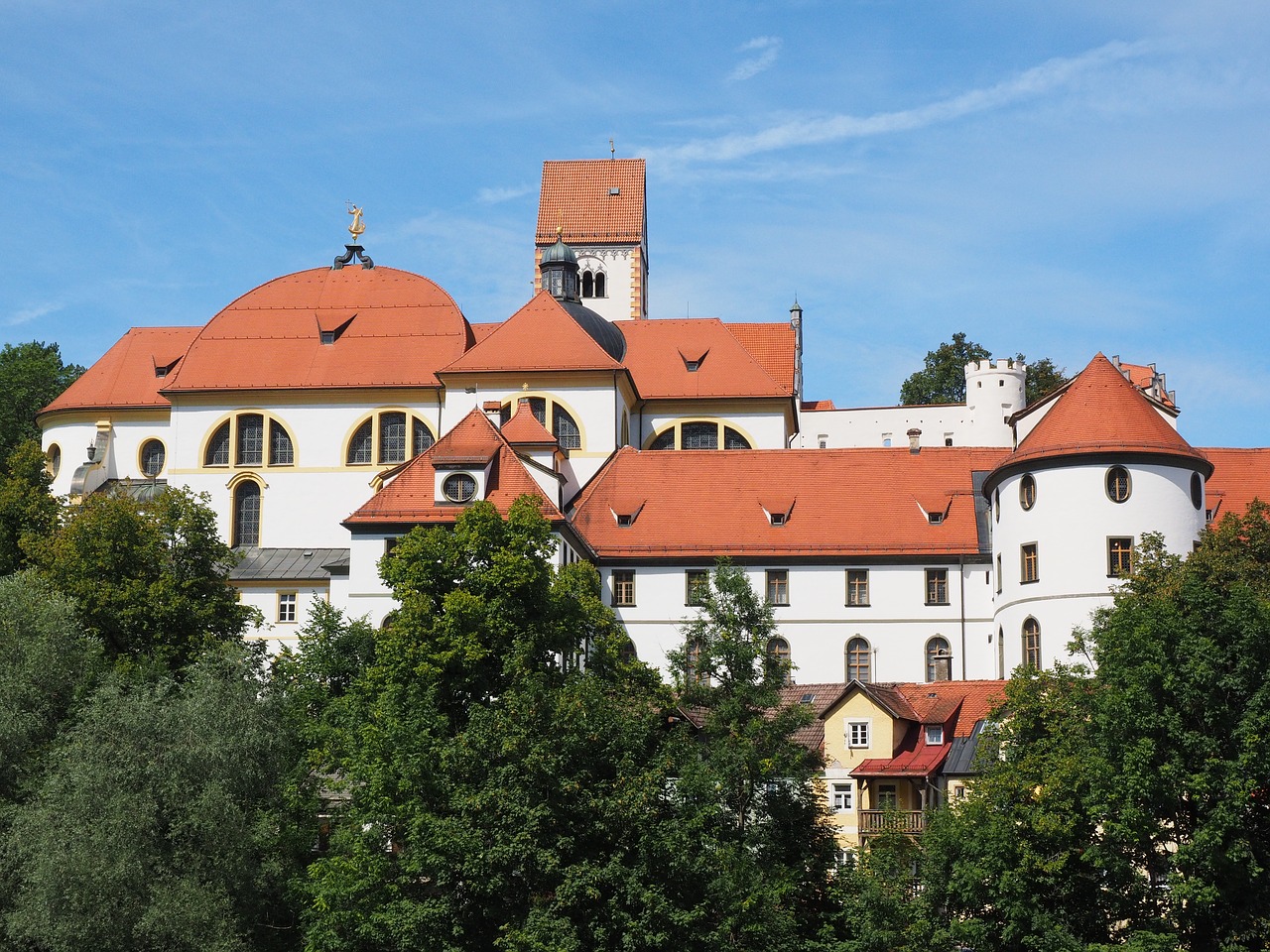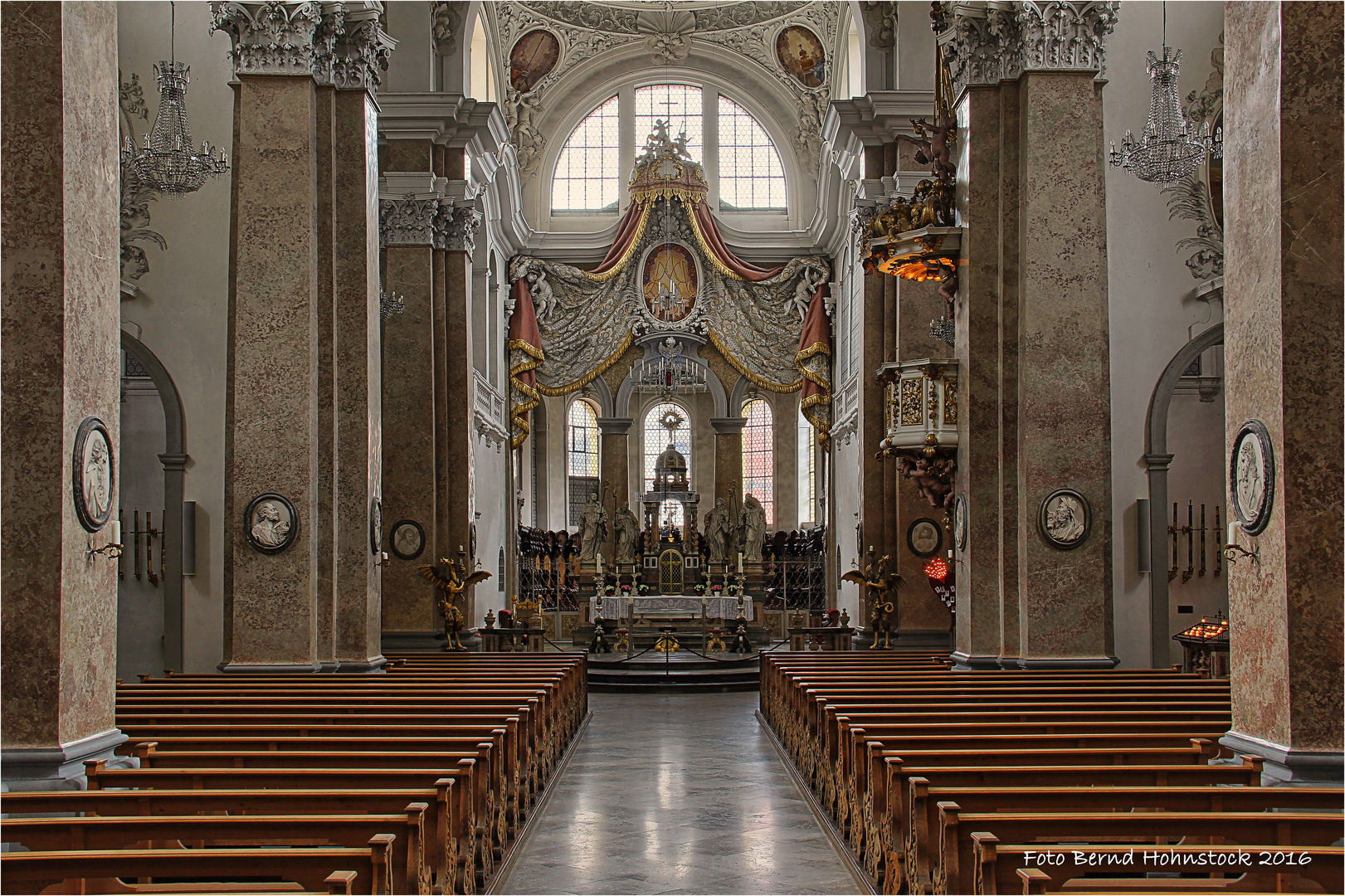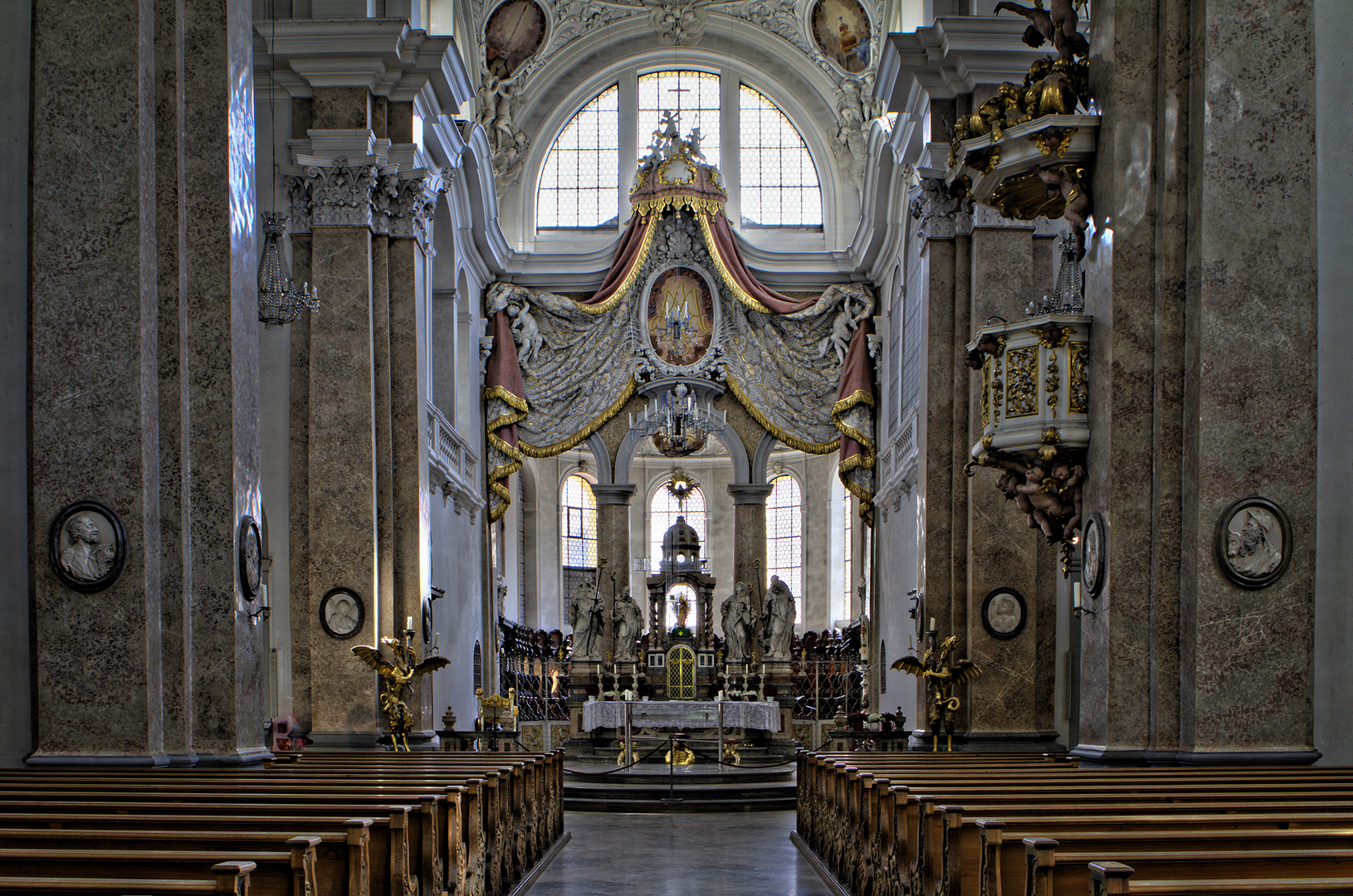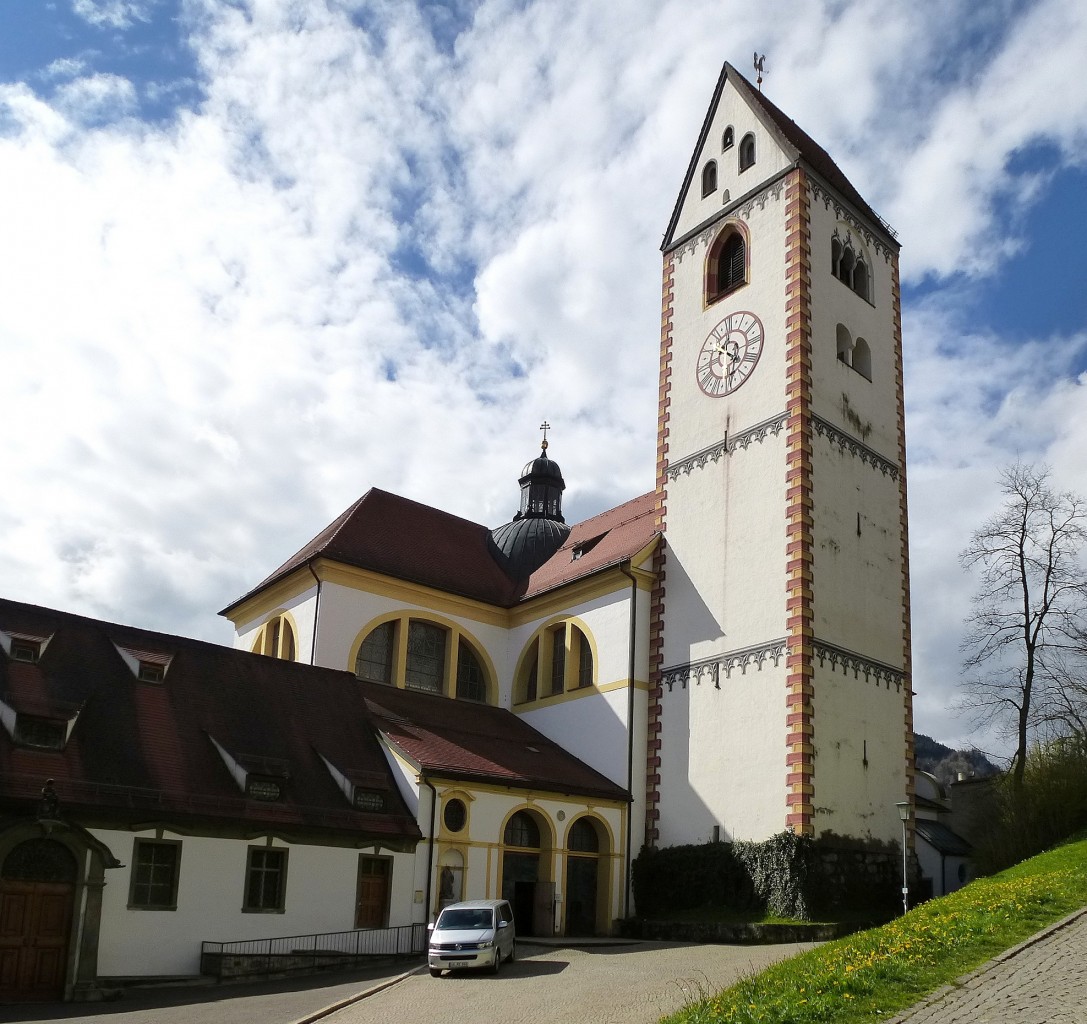
St mang's abbey,füssen,monastery,benedictine,benedictine monastery free image from
Füssen, Germany. The Benedictine abbey of Saint Mang was founded in the first half of the 9th century as a proprietary monastery of the Prince-Bishops of Augsburg. The reason for its foundation goes back to the hermit Magnus of Füssen (later Saint Mang) and his Benedictine brother Theodor, both from the Abbey of Saint Gall, who built a cell.

Füssen Kloster Sankt Mang romanischer Turm der Kirche a photo on Flickriver
Die Kirche St. Mang in Füssen im Allgäu wurde als Klosterkirche des Benediktinerklosters St. Mang errichtet und ist seit Auflösung des Klosters Anfang des 19. Jahrhunderts katholische Stadtpfarrkirche Lage. Das Kloster St. Mang liegt über dem Lech unterhalb des Burghügels des Hohen Schlosses. Die Pfarrkirche liegt am westlichen Ende des.

Bistum Augsburg
Die Barockbasilika St. Mang im Kloster St. Mang Menü Schließen; Suchen Karte. Buchen. Rathaus. Wandern. Touren. DAV-Wegekategorien; Tipps für die Wanderung. Füssen Tourismus und Marketing Anstalt des öffentlichen Rechts der Stadt Füssen Kaiser-Maximilian-Platz 1 D-87629 Füssen Tel.: +49 8362 9385-0

Füssen Kloster Sankt Mang St. Mang's Abbey in Füssen refl… Flickr
Stadtpfarrkirche St. Mang. Magnusplatz 1. 87629 Füssen. Die Stadtpfarrkirche St. Mang liegt in der Füssener Altstadt am Magnusplatz. Einige kostenlose Parkmöglichkeiten bestehen während der Gottesdienste am Magnusplatz. Ansonsten können die 5 Gehminuten entfernten öffentlichen Parkplätze an der Morisse genutzt werden.

Klosterkirche St. Mang Füssen.. Foto & Bild kirche, architektur, füssen Bilder auf
Benediktinerkloster St. Mang is a Benedictine monastery located in the town of Füssen in the Bavarian region of Germany. The monastery was founded in the 9th century by the Bavarian nobleman Magnus of Füssen, who later became Saint Magnus. The monastery's name comes from another saint, Saint Mang, who was a monk and a missionary […]

Kloster St. Mang in Füssen im Allgäu / Bayern (Bavaria) Flickr
Benediktinerkloster St. Mang: Lauten- und Geigenmachermuseum Das Geigenbaumuseum im Kloster St Mang. Füssen ist bekannt als die Geburtsstätte des gewerblich betriebenen Lautenbaus in Europa. Schon Ende des 14. Jahrhunderts werden Füssener Lautenmacher in den Archiven erwähnt.

Benediktinerkloster mit Basilika St. Mang von oben gesehen, Füssen im Allgäu, Bayern
The St. Mang Church in Füssen. The monastery and the former Basilica of St. Mang date back to St. Magnus, an Irish missionary from the monastery of St. Gallen who worked in the Allgäu in the 8th century. Above his cell was the first church, which was extended and built over in the course of the centuries. The church was extended to its.

St. Mang Füssen Foto & Bild architektur, deutschland, europe Bilder auf
Geschichte. Das Benediktinerkloster St. Mang wurde in der ersten Hälfte des 9. Jahrhunderts als Eigenkloster der Bischöfe von Augsburg errichtet. Der Gründungsvorgang reicht jedoch zurück auf das Wirken des Einsiedlers Magnus, der hier eine Zelle und ein Oratorium erbaut hatte und dort an einem 6. September verstarb.

Füssen Abtei oder St. Mang (Kloster Sankt Mang) ist ein ehemaliges Kloster der Benediktiner in
St Mang Basilica & Shrine of Blessed Francis X Seelos. A beautiful barock church dedicated to the Apostle of the Algäu,St Magnus,referred to locally as St Mang.The origional chapel built by him in the 7th century lies below the main altar and can be seen by attending one of the church tours in German.Inside the Basilica on the right hand side.

St . Mang Kloster Sehenswürdigkeit bei Füssen im Allgäu
St. Mang's Abbey, Füssen. Coordinates: 47°34′01″N 10°41′59″E. Aerial image of St. Mang's Abbey. St. Mang's Abbey, Füssen or Füssen Abbey ( German: Kloster Sankt Mang Füssen) was a Benedictine monastery in Füssen in Bavaria, Germany. It was founded in the 9th century, and dissolved during the post-Napoleonic secularisation of Bavaria.

Kloster Sankt Mang Kloster St. Mang Foto & Bild deutschland, europe, bayern
St. Mang's Abbey, Füssen or Füssen Abbey was a Benedictine monastery in Füssen in Bavaria, Germany. It was founded in the 9th century, and dissolved during the post-Napoleonic secularisation of Bavaria.

Das mächtige Kloster St. Mang in Füssen Reutte
The magnificent Benedictine monastery of St. Mang in Füssen has existed since the 8th century and is today considered one of Germany's nationally valuable cultural monuments. The baroque complex rises majestically on the high bank of the Lech and today houses the museum of the town of Füssen, the town administration and the parish church of.

Die Kirche des ehemaligen Klosters St. Mang in Füssen Foto & Bild deutschland, europe, bayern
A picturesque sight at once, St. Mang's Abbey was established in the 9th Century for the Prince-Bishops of Ausburg, on the site of Magnus of Füssen's oratory and cell, where his untarnished body was found. Formerly a Benedictine abbey, it was built in Bavaria in Germany at a point of medieval strategic importance. The remains of the patron saint were finally interred at the now-dissolved.

Füssen Kloster St. Mang Das Benediktinerkloster St. Mang… Flickr
FÜSSEN. Der heilige Magnus und das in seiner Nachfolge im 9. Jhd. gegründete und nach ihm benannte Kloster St. Mang haben die Geschichte Füssens und der umliegenden Region über Jahrhunderte hinweg geprägt. Füssens Stadtpatron Magnus kam im 8. Jhd. wahrscheinlich aus dem rätoromanischen Raum in die Region.

Füssen Stadtkirche St. Mang Foto & Bild deutschland, europe, bayern Bilder auf
Former Benedictine Abbey. The ancient, somber building below is the former Benedictine Abbey of St Mang founded in the first half of the 9th century. Saint Magnus or St. Mang, a missionary saint in southern Germany settled in Fussen, built a cell and small chapel. St Mang died on 6th September, the actual year of his death is unknown.

Füssen, die Basilika St.Mang des ehemaligen Benediktinerklosters, April Staedtefotos.de
The Museum of Füssen. The Museum of Füssen is located in the southwest wing of the former Benedictine monastery of St. Mang, which was built in the early 18th century under the architect Johann Jakob Herkomer after Venetian model. Together with the High Palace it constitutes one of the main features of Füssen's townscape.